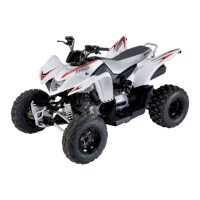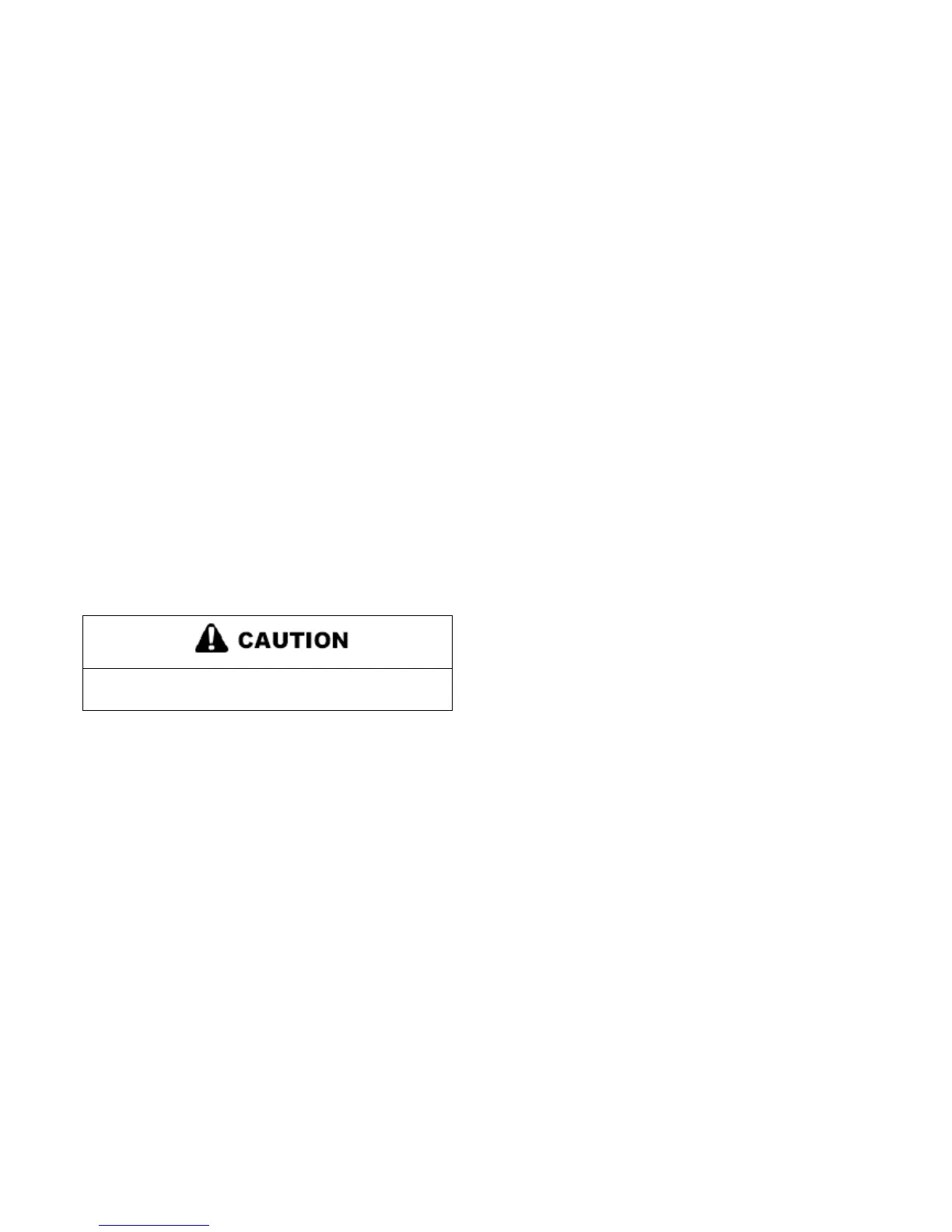FUEL AND CARBURETOR
6-14
CARBURETOR CLEANING
Carburetor cleaners can be extremely caustic. Extended
periods of soaking can loosen the adhesive sealer on the
passage drill-way plugs. Do not soak rubber or plastic
components (such as the vacuum slide diaphragm, needle seat
screen, or O-Rings in caustic cleaning solutions. Irreparable
damage may occur. Do not use agitator--type carburetor
cleaning equipment. Rubber parts must be cleaned with mild
detergent and hot water only.
1. Thoroughly clean the carburetor body, jets, and all passages
with carburetor cleaner or electrical contact cleaner.
2. If the carburetor is extremely dirty or
residue and varnish, soak for short periods only in carburetor
cleaner, and rinse in hot water.
3. Replace the jets if they have a buildup of fuel residue or
bacterial growth that cannot be removed. Even a small amount
of residue will reduce the flow characteristics of the jet.
4. Verify all passages and jets are unobstructed by spraying
electrical contact cleaner through the passages.

